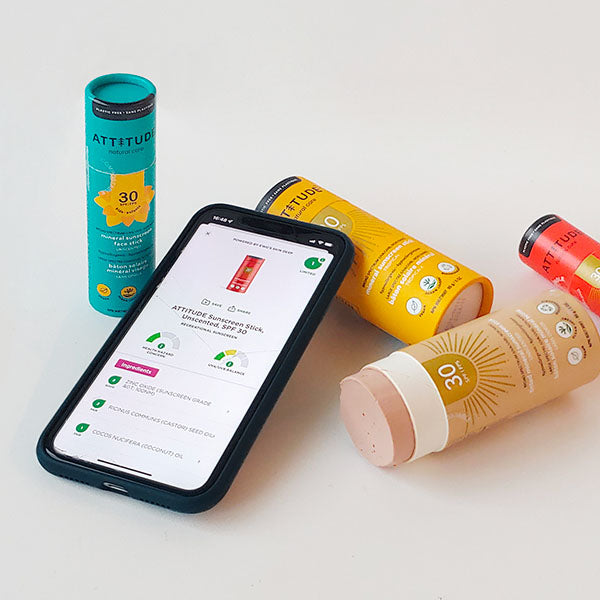What’s in your cleaning and beauty products?
The hidden ingredients in everyday products
Have you heard of 1,4-Dioxane, Formaldehyde or Nitrosamines? All are possible or known carcinogens for humans, present in most everyday household and personal care products. Yet you won’t find them in the list of ingredients on the label. They’re there between the lines.
Thousands of everyday products in their pure form indirectly contain harmful contaminants — they may be impurities, residues, or substances generated during the manufacturing process.
Because these contaminants are not directly added, they do not have to be listed as ingredients1 in your traditional, ecological or organic household and personal care products.
How to identify hidden carcinogens
You have the option to expose or not your family by learning how to identify ingredients that produce or contain harmful contaminants.
1,4-Dioxane, Formaldehyde and Nitrosamines occur in products many of us use every day. To identify them, look for their source ingredients.
1,4-Dioxane
1,4-Dioxane is the world’s most common contaminant. It is classified as possibly carcinogenic by California Proposition 652 and is included on the David Suzuki Foundation’s (DSF) list of the 12 chemical agents to be avoided in cosmetics3 as well as on EWG’s list, a non partisan organization dedicated to protecting human health and the environment.
This contaminant is found in ingredients commonly used as foaming and emulsifying agents. According to EWG, to identify it in your cleaning and cosmetic products, check the label for the following ingredients:
- Sodium Laureth Sulfate and all ingredients with suffixes -eth- or -oxynol
- Polyethylene, Polyethylene glycol (PEG)
- Polysorbate- (20, 30, 80)
Formaldehyde
Formaldehyde, another product found in many household products, is classified as a known carcinogen by the IARC4. Several preservatives on the market act by gradually releasing Formaldehyde into the product to prolong its shelf life. This contaminant is found in the following ingredients:
- DMDM hydrantoin
- Dioazolidinyl / imidazolidinyl urea
- Quaternium-15
Nitrosamines
Nitrosamines are contaminants classified as possibly carcinogenic by the IARC4 and California’s Proposition 652. These chemicals are present in the following ingredients:
- Cocamidopropyl betaine, triethanolamine and cocamide DEA / MEA, among others (EWG5)
- Ingredients with suffixes ‘-DEA’, classified on the list of 12 chemical agents to be avoided in cosmetics (DSF3)
Free tools to help you choose safe products

The standards set by the Environmental Working Group (EWG), a North American benchmark for health and wellness, help consumers choose products that contain low-risk ingredients.
The EWG awards EWG VERIFIED certification to health and wellness products that are free from harmful chemicals. Consumers can also rely on the EWG’s Skin Deep Cosmetics Database, which lists potential hazards and health concerns for cosmetics and personal care products.
ATTITUDE™: good for you, your family and the planet
Understanding the ingredients in your everyday products can be daunting. At ATTITUDE™, this is our expertise, and our way of life. Ensuring that none of the ingredients in our products contain these carcinogenic contaminants is our mission to give you peace of mind. We do not write "without this ingredient" on our labels.

Experience has taught us that declaring what had been eliminated from a product is simply a strategy to divert consumers’ attention. It is essential that consumers know which component was added to replace a removed ingredient.
Instead, ATTITUDE™ has implemented rigorous product development criteria that rely on internationally recognized scientific databases. It is only by satisfying all these criteria that we can consider our ingredients safe.
Ready to learn more? Read the other posts in this series:
- Part One: Are Product Label Misleading?
- Part Three: Why choose EWG skincare?
References :
- “Ingredient Names”. U.S. Food and Drug Administration. 9 mai 2017. https://www.fda.gov/Cosmetics/Labeling/IngredientNames/ucm2005218.htm
- “The Proposition 65 List”. OEHHA. 9 mai 2017. https://oehha.ca.gov/proposition-65/proposition-65-list
- “Dirty dozen cosmetic chemicals to avoid”. David Suzuki Foundation. 9 mai 2017. http://www.davidsuzuki.org/issues/health/science/toxics/dirty-dozen-cosmetic-chemicals/
- “IARC Monographs on the Evaluation of Carcinogenic Risks to Humans”. Centre International de Recherche sur le Cancer. http://monographs.iarc.fr/FR/Classification/index.php
- “EWG’s Skin Deep Cosmetics Database”. Environmental Working Group. 9 mai 2017. http://www.ewg.org/skindeep/brand//compact_provisions/
Do you want to read other articles wich talk about Cocamidopropyl Betaine? Have a look here :
- What's in Blond Story's shampoo?
- What's in the shampoo of the HappyFitness girls?
- 13 natural ingredients to look for in a shampoo
- Under the microscope | 5 ingredients to avoid in unscented products
- The importance to choose natural ingredients in personal care products when pregnant
- 10 ingredient categories to avoid in a shampoo